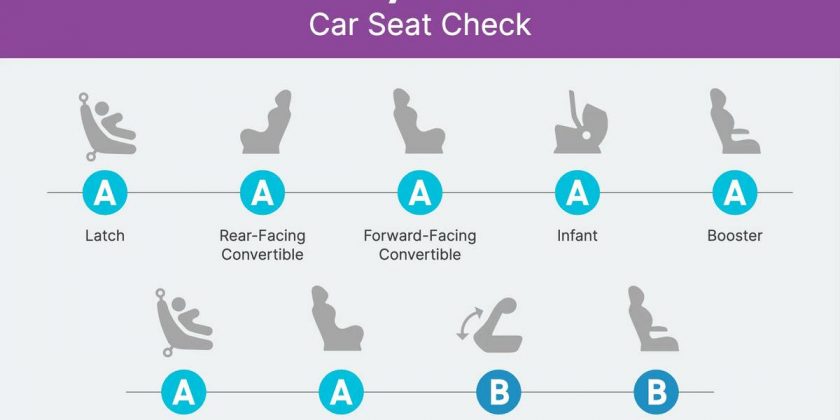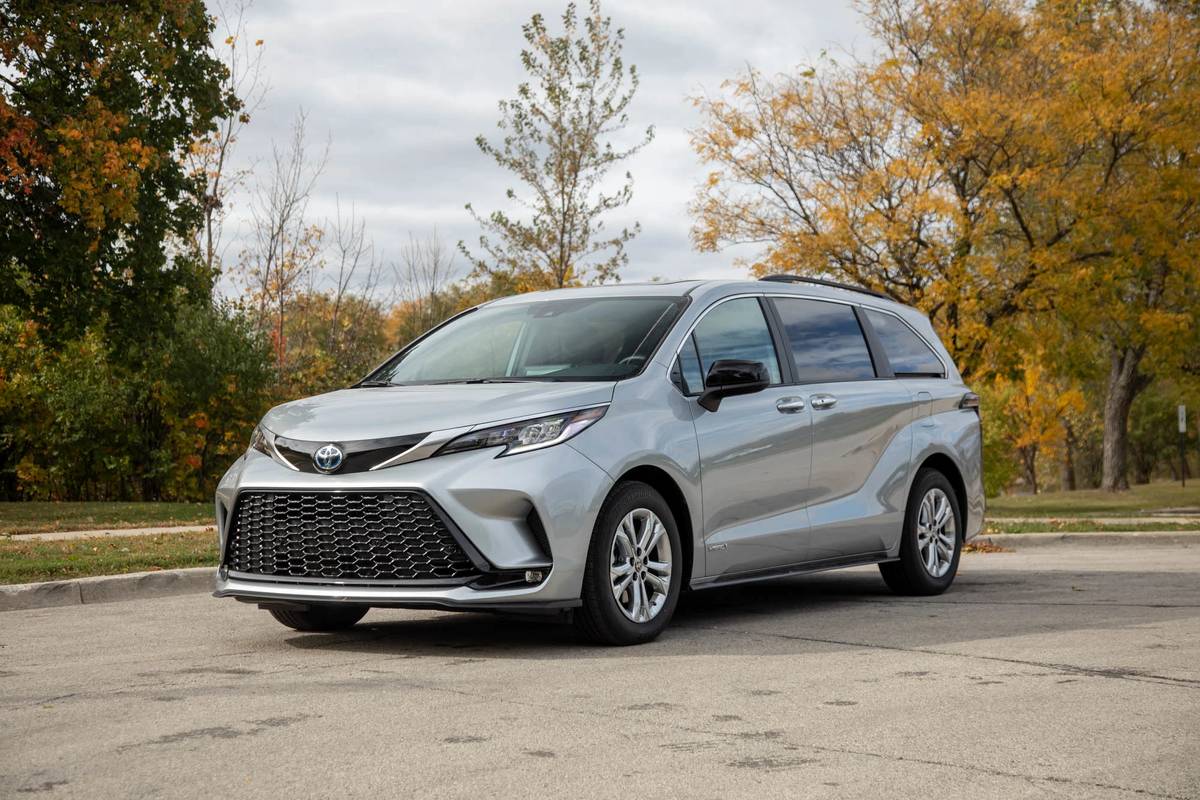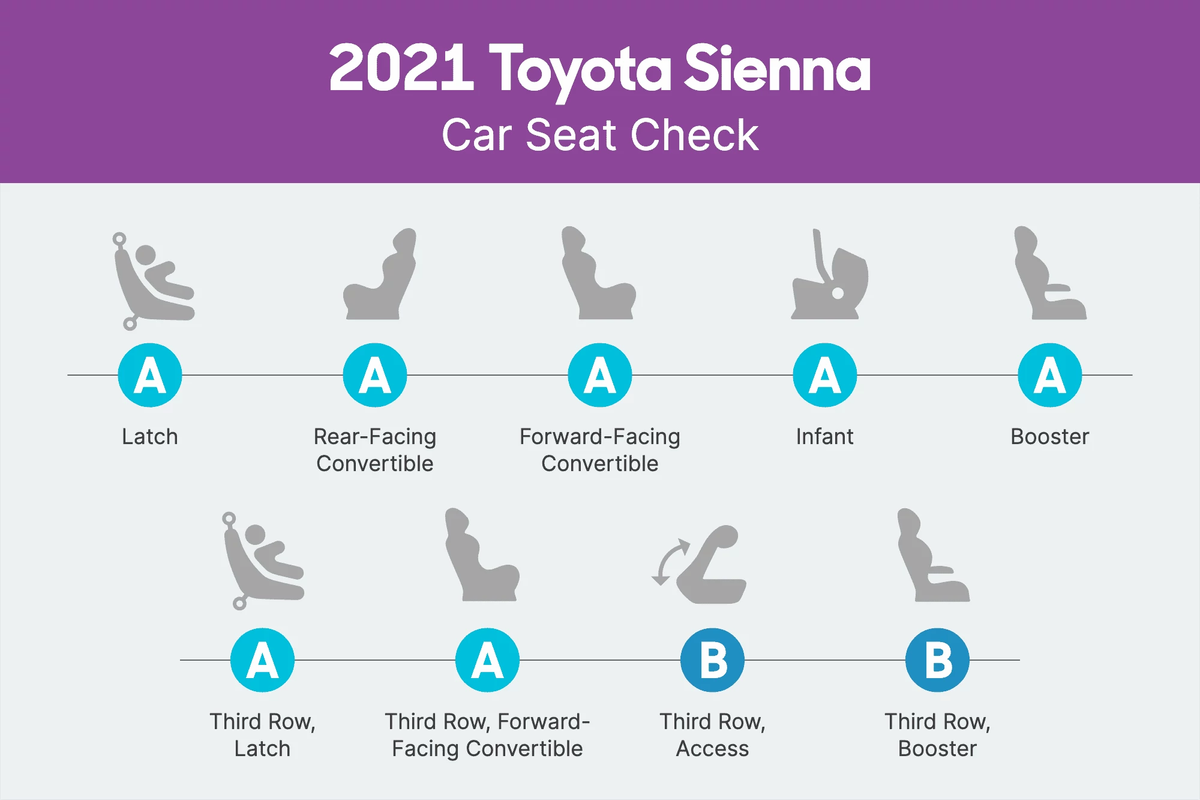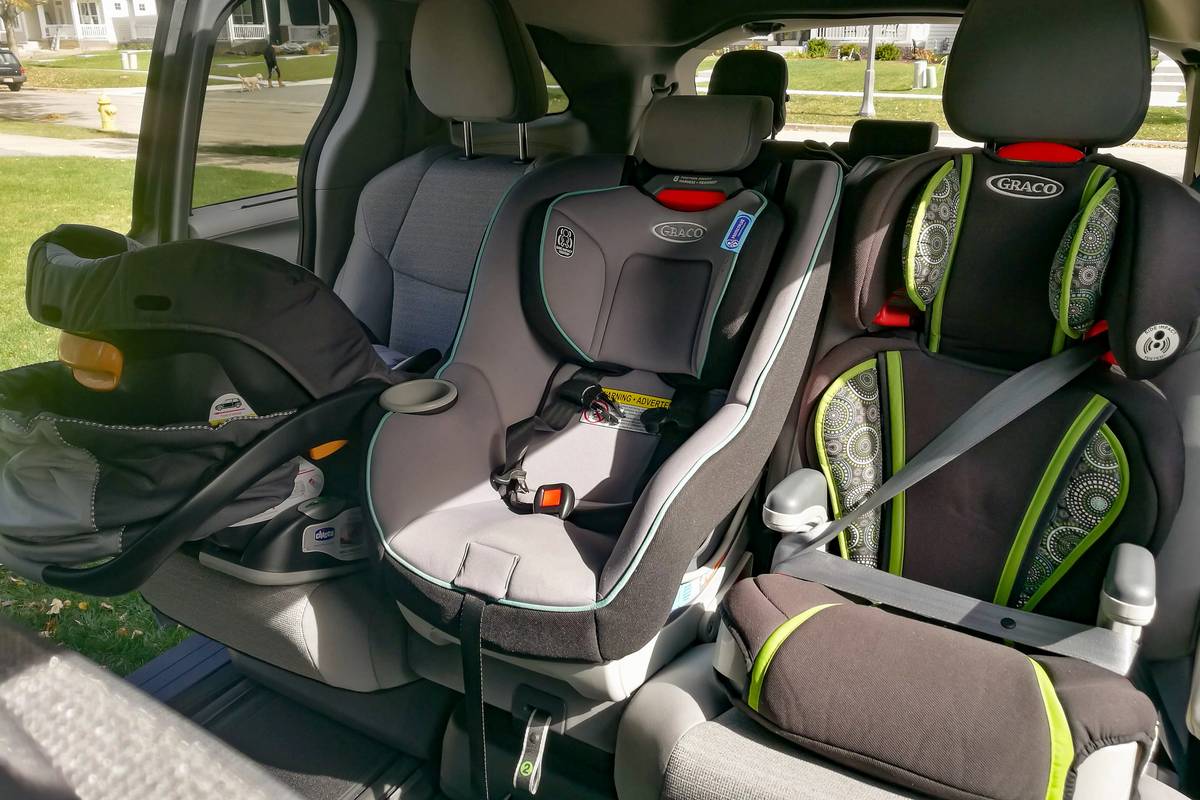The verdict: In recent years, automakers have been adding more and more equipment to their minivans, hoping to make them irreplaceable in families’ lives. Toyota took a slightly different road in its redesign of the Sienna; while the 2021 Sienna still packs a bunch of family-friendly features, the big news for the new model year is its hybrid-only powertrain.
For this Car Seat Check, we tested a Sienna LE with cloth seats; it had a second-row bench seat. We found plenty to like, from its easy-access Latch anchors to its ample legroom.
Does it fit three car seats? Yes, when the middle seat is installed in the second row. It can also be removed for easier access to the third row.
Take a look at how the Latch system and each car seat scored below in our Car Seat Check of the 2021 Toyota Sienna.
Related: Search Car Seat Checks
A Grade
- Latch: There are three sets of lower anchors in the second row; they’re exposed for easy access and connection. Three top tether anchors sit halfway down the seatback; they’re also clearly marked and easy to use.
- Infant: This seat went in easily and our 5-foot, 6-inch front passenger had tons of legroom.
- Rear-facing convertible: As with the infant seat, we had no trouble installing the rear-facing convertible, and the front passenger again had ample legroom.
- Forward-facing convertible: After raising the head restraint to situate the convertible flush against the seatback, it fit well. Connecting to the lower and upper anchors was easy.
- Booster: This seat also fit well in the second row once we raised the head restraint. The Sienna’s stable buckles should be easy for kids to grasp and use independently.
- Latch, third row: The third row has two sets of lower anchors in the outboard positions and they’re exposed for easy connection. There are three top tether anchors on the top of the seatback; they’re clearly marked for good access and connection.
- Forward-facing convertible, third row: The fixed head restraint doesn’t interfere with how the car seat fits flush against the seatback, and connection to the top and lower anchors was easy.
B Grade
- Third-row entry: The second row’s outboard seats collapse with ease, providing a wide opening to the third row, though this won’t work when a car seat is installed in the seats. The middle seat is also removable, opening up a pathway to the third row, but it’s heavy and cumbersome to take out.
- Booster, third row: The head restraint flops down but doesn’t come out; it didn’t interfere with our booster install. We were still able to situate the booster flush against the seatback. Only the passenger side buckle is stable; the other two are flush with the seat bottom cushion, which could make them tough for kids to grasp and use. Also, the third row’s middle seat is narrow and the seat belt strap comes down from the ceiling, so that spot should be avoided.
C Grade
- None
Grading Scale
A: Plenty of room for the car seat and the child; doesn’t impact driver or front passenger legroom. Easy to find and connect to Latch and tether anchors. No fit issues involving head restraint or seat contouring. Easy access to the third row.
B: One room, fit or connection issue. Some problems accessing the third row when available.
C: Marginal room plus one fit or connection issue. Difficult to access the third row when available.
D: Insufficient room, plus multiple fit or connection issues.
F: Does not fit or is unsafe.
About Cars.com’s Car Seat Checks
Editors Jennifer Geiger, Jennifer Newman and Matt Schmitz are certified child safety seat installation technicians.
For the Car Seat Check, we use a Chicco KeyFit 30 infant-safety seat, a Graco Contender 65 convertible seat and Graco TurboBooster seat. The front seats are adjusted for a 6-foot driver and a shorter passenger. The three child seats are installed in the second row. The booster seat sits behind the driver’s seat, and the infant and convertible seats are installed behind the front passenger seat.
We also install the forward-facing convertible in the second row’s middle seat with the booster and infant seat in the outboard seats to see if three car seats will fit; a child sitting in the booster seat must be able to reach the seat belt buckle. If there’s a third row, we install the booster seat and a forward-facing convertible. Learn more about how we conduct our Car Seat Checks.
Parents should also remember that they can use the Latch system or a seat belt to install a car seat, and that Latch anchors have a weight limit of 65 pounds, including the weight of the child and the weight of the seat itself.
Cars.com’s Editorial department is your source for automotive news and reviews. In line with Cars.com’s long-standing ethics policy, editors and reviewers don’t accept gifts or free trips from automakers. The Editorial department is independent of Cars.com’s advertising, sales and sponsored content departments.
Source: Read Full Article



